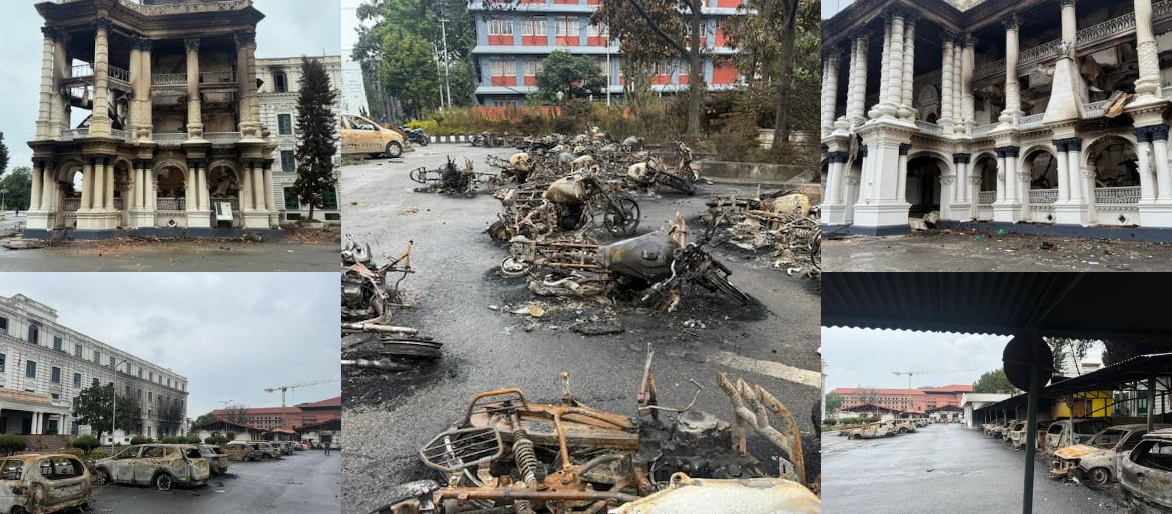Insurance Sector Strained as Gen Z Protests Leave Nepal Counting Billions in Losses

Kathmandu — The wave of Gen Z-led protests that shook Nepal in last week has left behind more than broken windows and charred storefronts. It has unleashed one of the largest insurance crises the country has faced in recent memory, pushing insurers, regulators, and businesses into a delicate battle over compensation and survival.
The scale of destruction is staggering. Entire retail chains, hotel complexes, and transport fleets lie in disarray after days of clashes that spread across the capital and beyond. Economists warn that the overall economic cost may exceed three trillion rupees, with damages to private property alone prompting insurers to brace for claims of more than fifty billion rupees. For Nepal’s insurance sector, still struggling to mature after the 2015 earthquake tested its resilience, the new wave of claims has exposed long-standing weaknesses in coverage, valuation, and regulatory preparedness.
Among the most visible casualties is Bhat-Bhateni Supermarket, the country’s largest retail chain. Twenty-one of its twenty-eight outlets were ransacked or torched, leaving its shelves gutted and staff displaced. The hotel industry, already weakened by the pandemic years, has also been battered, with losses estimated at eight billion rupees. Thousands of employees have been thrown out of work as international and domestic chains remain shuttered, their future dependent on how swiftly insurers can process claims.
The Nepal Insurance Authority has moved quickly to issue directives, instructing companies to accelerate the settlement of claims and to submit regular reports on their progress. Officials insist that policyholders should not face delays at a moment of crisis, but insiders admit the system is under severe strain. Insurers must rely on surveyors and assessors to document losses in neighborhoods where records have been destroyed and businesses lack the paperwork needed to substantiate their policies.
Experts warn that the crisis has also laid bare the vulnerabilities of Nepal’s premium structures. Many businesses had opted for the lowest-tier coverage against civil unrest, sabotage, or politically motivated violence, categories often bundled under “riot” clauses. Premiums collected under such categories are negligible compared to the losses now on the table. The mismatch has triggered questions about solvency, particularly for smaller insurers that may not have reinsurance coverage robust enough to absorb the avalanche of claims.
The ripple effects stretch far beyond insurance desks. More than ten thousand workers are believed to have lost their jobs in retail and hospitality alone, while the tourism sector has suffered a severe blow just as the autumn season was beginning. International arrivals, particularly from India, have dipped sharply amid images of curfews and unrest in Kathmandu. For a fragile economy, the timing could hardly be worse.
At the political level, the unrest has already toppled old power alignments, leading to the appointment of Sushila Karki as interim prime minister with elections scheduled for March 2026. While her government urges calm, business owners and investors remain anxious. Compensation from insurers could determine whether they reopen their doors or disappear entirely from Nepal’s commercial map.
The protests may have been rooted in generational frustrations, but their aftermath has turned into a reckoning for Nepal’s insurance sector. Whether companies can process billions in claims swiftly and fairly will shape not only the recovery of individual businesses but also public trust in financial institutions. For now, Nepal waits at a crossroads—between an orderly path of compensation and renewal, or a drawn-out struggle that could deepen the scars of an already fragile economy.
